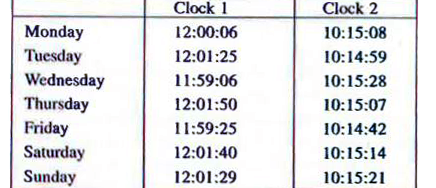A : In a measurement, two readings obtained are 20.004 and 20.0004. The second measurement is more precise.
R : Measurement having more decimal places is more precise.
If both Assertion & Reason are true and the reason is the correct explanation of the assertion, then mark (1).
If both Assertion & Reason are true but the reason is not the correct explanation of the assertion, then mark (2).
If Assertion is true statement but Reason is false, then mark (3).
If both Assertion and Reason are false statements, then mark (4).
The correct Answer is:A
To solve the question, we need to analyze the assertion (A) and the reason (R) provided.
Step 1: Understand the Assertion
The assertion states that the second measurement (20.0004) is more precise than the first measurement (20.004).
Step 2: Analyze the Measurements
- First measurement: 20.004
- Second measurement: 20.0004
Step 3: Count the Decimal Places
- The first measurement (20.004) has 3 decimal places.
- The second measurement (20.0004) has 4 decimal places.
Step 4: Determine Precision
Precision in measurements is often indicated by the number of decimal places. The more decimal places a measurement has, the more precise it is considered.
Step 5: Compare the Precision
Since the second measurement (20.0004) has 4 decimal places, while the first measurement (20.004) has only 3 decimal places, the second measurement is indeed more precise.
Step 6: Evaluate the Reason
The reason states that a measurement having more decimal places is more precise. This statement is correct and supports the assertion.
Conclusion
Both the assertion (A) and the reason (R) are correct, and the reason is a valid explanation for the assertion.
Final Answer
- Assertion (A) is correct.
- Reason (R) is correct and explains (A).
The assertion states that the second measurement (20.0004) is more precise than the first measurement (20.004).
- First measurement: 20.004
- Second measurement: 20.0004
- The first measurement (20.004) has 3 decimal places.
- The second measurement (20.0004) has 4 decimal places.
Precision in measurements is often indicated by the number of decimal places. The more decimal places a measurement has, the more precise it is considered.
Since the second measurement (20.0004) has 4 decimal places, while the first measurement (20.004) has only 3 decimal places, the second measurement is indeed more precise.
The reason states that a measurement having more decimal places is more precise. This statement is correct and supports the assertion.
Both the assertion (A) and the reason (R) are correct, and the reason is a valid explanation for the assertion.
- Assertion (A) is correct.
- Reason (R) is correct and explains (A).
Topper's Solved these Questions
- UNITS AND MEASUREMENTSBOOK - AAKASH INSTITUTE ENGLISHCHAPTER - UNITS AND MEASUREMENTSEXERCISE - ASSIGNMENT (SECTION - C)
31 Videos
- THERMODYNAMICSBOOK - AAKASH INSTITUTE ENGLISHCHAPTER - THERMODYNAMICSEXERCISE - ASSIGNMENT (SECTION -D) (Assertion - Reason Type Questions)
10 Videos
- WAVE OPTICSBOOK - AAKASH INSTITUTE ENGLISHCHAPTER - WAVE OPTICSEXERCISE - Assignment (Section-J (Aakash Challengers question))
1 Videos
Similar Questions
Knowledge Check
If an angle measures 10∘ more than its complement, then the measure of the angle is
A40∘B55∘C35∘D50∘
A : Out of the measurements A = 20.00 and B = 20.000, B is more accurate.
R : Percentage error in B is less than the percentage error in A.
View SolutionMore specialized measuring vessel is used to measure volume of chemicals in a laboratory
View SolutionSuppose, you are to take the measurements of the mass of a 50.0-gram standard sample with a weighing balance. You get values of 47.5, 47.6, 47.5 and 47.7 grams with weighing machine-1 and 49.8, 50.5, 51.0, 49.6 with machine-2, then
(A) Machine 1 is more accurate and less precise
(B) Machine 2 is more assurate and less precise
(C) Machine 1 is less accurate and more precise
(D) Machine 2 is less accurate and more percise Select correct alternative.
View SolutionTwo clocks are being tested against a standard clock located in a national laboratory. At 12:00:00 noon by the standard clock, the readings of the two clocks are :

If you are doing an experiment that requires 'precision time interval' measurements , which of the two clocks will you prefer ?
View SolutionThe mean diameter of a thin brass rod is to be measured by a vernier calipers. Why is a set of 100 measurements of the diameter expected to yield a more reliable estimate than a set of 5 measurements only?
View SolutionThe true value of a particular length is 4.283 cm. The three instuments A,B and C , used to measure this length give the readings 4.1 cm, 4.24 cm and 4.093cm. Arrange these readings in the increasing order of accuracy and precision. Which instrument is most reliable for measuring this length ?
View SolutionAn angle is 140 more than its complementary angle. What is its measure?
View Solution
